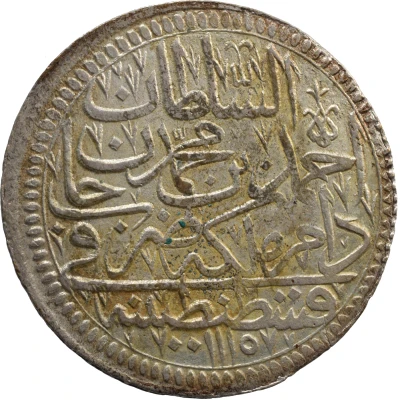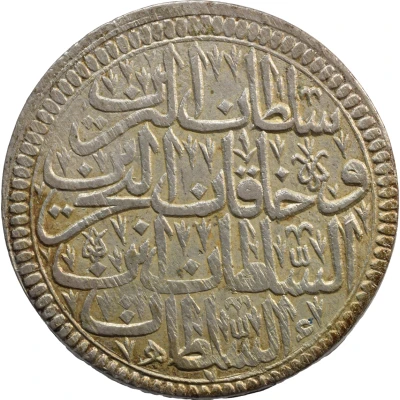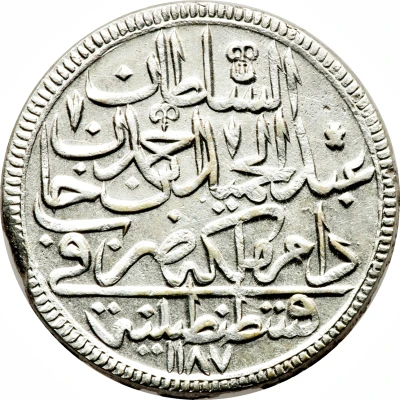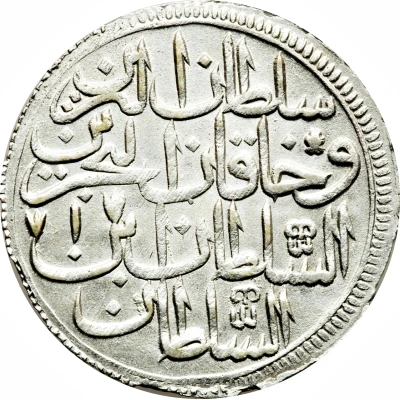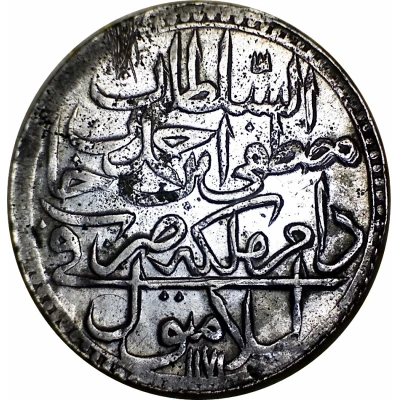
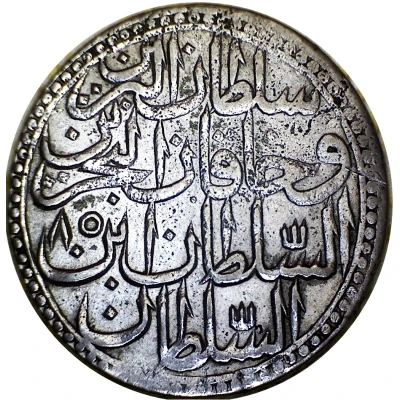

© jones
Zolota - Mustafa III Islambol
1171 (1758) year| Billon (.465 silver) | 14 g | 35 mm |
| Issuer | Ottoman Empire |
|---|---|
| Sultan | Mustafa III (1757-1774) |
| Type | Standard circulation coin |
| Year | 1171 (1758) |
| Calendar | Islamic (Hijri) |
| Value | 30 Para = 1 Zolota (¾) |
| Currency | Kuruş (1688-1844) |
| Composition | Billon (.465 silver) |
| Weight | 14 g |
| Diameter | 35 mm |
| Thickness | 1 mm |
| Shape | Round |
| Orientation | Medal alignment ↑↑ |
| Demonetized | Yes |
| Updated | 2024-10-07 |
| Numista | N#49136 |
|---|---|
| Rarity index | 80% |
Reverse
Sultan ul berreyn
ve hakan ul bahreyn
es sultan ibn 85
es sultan
Script: Arabic
Lettering: سلطان البرّين و خاقان البحرين السلطان ابن ٨٦ السلطان
Translation: Sultan of the two lands, emperor of the two seas, the Sultan son of 86 the Sultan
Comment
The number that awkwardly comes in the third line above the word “son of” is the actual date not like the two other ones, it’s the second half of the date, so the 1171 on the obverse is the date the sultan came into power, but the 86 on the reverse is the second half of 1186, which is the actual date this coin was struck, this system is confusing and was used for a period of time instead of the regnal dates but obviously it’s not the regnal date as I’m certain the sultan didn’t rule for 86 yearsInteresting fact
One interesting fact about the Zolota coin is that it was issued during the reign of Mustafa III, who was the Sultan of the Ottoman Empire from 1757 to 1774. During his reign, the Ottoman Empire was facing significant challenges, including the loss of territories in the Balkans and the Caucasus, and Mustafa III implemented various reforms to try to address these issues. The Zolota coin was likely used as a means of currency during this time, and its design and production were likely overseen by the Ottoman government.
